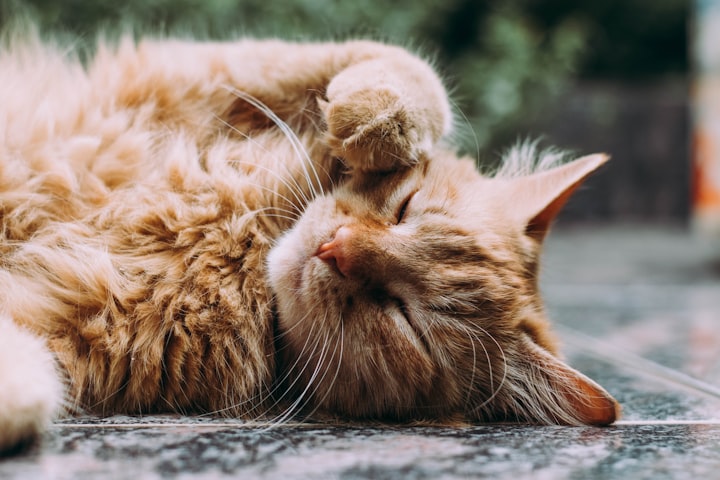The INTP Diaries
There's nothing like a personality type indicator to confirm that you really are a little.... different.

When I got my first job in a large company, to say I had trouble fitting in would be an understatement. Before that, I had only ever worked for small businesses—10 employees max, so even as a socially awkward introvert with an anxiety disorder, I still managed to make friends. In bigger organisations? The bullpen is a lot like the schoolyard. There are cliques. The mean girls, the nerds, the jocks, the creatives etc... just like high school, and the behaviours don't differ much either.
This might sound like an odd thing to gripe about, but I look extraordinarily normal—The plainest of plain Jane's. I'm a 5ft2, blonde-haired, blue-eyed, comfy jeans, converse shoes and sensible button-down shirt kinda girl. So when people meet me, they expect me to act... normal?
Unfortunately, my inability to align my awkward interior with my ordinary exterior means I get people offside, like, a lot. A conversationalist, I am not. Small talk is torture for me, and it physically evokes a response that is like fight or flight. If the conversation lacks substance, I have an uncontrollable urge to get the hell out of dodge. As a result, I get labelled at best, rude and, at worst, arrogant. I'm neither, but it is what it is.
After well over a year of awkward encounters and roughly 4 out of 100+ of the fellow employees that I had managed to actually connect with, I received an email from the CEO asking me to set aside 20 minutes to complete "The Myers–Briggs Type Indicator (MBTI)".
Everyone in my section had received the same email. I heard the collective groans and the "what a waste of time" quips from those far too busy and important to set aside 20 minutes for a little introspection and self-improvement. I, however, was intrigued. Apparently, answering this little questionnaire would give valuable psychological insight into how we perceive the world and make decisions. That seemed like a solid use of 20 minutes to me, so I filled out the questionnaire as soon as I found the time.
I hadn't given it much thought until a few weeks later, we all received an invitation to attend a session where we would be issued our results. As I drowned out the groans from the cubicles around me, I was excited and a little nervous, but in that good, anticipatory way.
Our CEO at the time was eccentric. Everyone always talked about how weird he was but, I liked him. He was intimidating because he was the boss, and I was a lowly contact centre agent (more about how that was the single worst job in the world for me another time). Still, he had a cool sense of humour and was undeniably intelligent. And, in the limited interaction I had with him at this point, he was always kind. Far more so than my "peers".
It turns out he was an accredited Myers-Briggs practitioner, so he was the one delivering the session. He began by explaining to us what the Myers-Briggs Type Indicator was. It's complicated so, forgive me for condensing it to its ultimate simplicity for the purpose of this article—There are 16 personality types, everyone fits into one. These are based on where we naturally operate or draw our energy from. You can do an extremely condensed yet accurate version of the questionnaire to find your type here.
"The purpose of the Myers-Briggs Type Indicator® (MBTI®) personality inventory is to make the theory of psychological types described by C. G. Jung understandable and useful in people's lives. The essence of the theory is that much seemingly random variation in the behavior is actually quite orderly and consistent, being due to basic differences in the ways individuals prefer to use their perception and judgment." - Myers-Briggs Foundation
He was an INTP (Introverted-Intuitive-Thinking-Perceiving). And proud of it. The giant picture of Einstein (one of the most famous INTP's) that hung on his office wall suddenly made sense. He viewed himself as somewhat of a genius. He admitted that on the scale, he was at the extreme end of his type. But based on his behaviour, it seemed the type indicator was indeed accurate, at least for him. He explained that in our room of 20, 18 out of those 20 were E's and F's (Extroverted-Feeling), which is very common. One was an I, F (Introverted-Feeling), which was less common, and there was but one other INTP in the room... and his gaze drifted to me.
Obviously, this did wonders for my popularity. People especially started to come around to the idea of me when he started referring back to everything he was saying with comments like "People like us" or "we". It was the first day of high school all over again and I was the unintentional teacher's pet. The problem was, I found the whole profile so accurate and am so relentlessly logical that I couldn't even pretend that it might have been wrong. I am my own worst enemy.
Luckily, one of my co-workers who happened to be an ESFJ (my polar opposite, an absolute legend and one of my very best friends to this day) pulled me out of the hole I was slowly burying myself in with her wonderful extroverted, empathetic nature.
"Bloody hell mate, I must drive you nuts!"
Everyone laughed, the spotlight was redirected from me and I was able to survive the rest of the session with a "no-more-than-usual" level of awkwardness.
"The INTP personality is a rarer personality type, making up around three percent of the population. Individuals with an INTP personality are often referred to as “The Logician,” “The Thinker” or “The Architect.” INTPs are brilliant, philosophical people. They are thoughtful, pensive and enjoy working independently on their own ideas. They can be loners with a few close friends. INTPs are creative geniuses, and when in the correct work environment can do remarkable things. " - Indeed.com
To be fair, the exercise did garner me a little more empathy and understanding from my coworkers. They still found me weird, but at least they now knew I wasn't rude and arrogant, just a little... eccentric. I was still never going to be number one on the invite list for Friday night drinks, though, which is a damn shame because if anything can bring out my inner extrovert, it's a good Rosé.
For me, it was the day a lot made sense. I would regularly do things that made me mutter to myself as I fled the scene, "Why am I like this?" and now I knew why. I've done this test several times over the years and always get the same result. It's not for everyone, but I find it fascinating, informative and creepily accurate. While you won't find me staring at a poster of Einstein as though it's my own reflection, I have over time learned to embrace the fact that my type makes up 3% of the population, and that makes me way less than everyone's cup of tea. And those few whose cup of tea I am, are definitely worth getting out of my comfort zone for.
If you've never done the MBTI type indicator, and this article has made you curious, you can take the condensed version of the questionnaire here. As with all things in this realm, I'd caution you to take it with a grain of salt. We are always ultimately responsible for how we behave, but I think there is merit in the notion that we are wired somewhat fundamentally.
Regardless, stay weird, friends!
About the Creator
Jessie Waddell
I have too many thoughts. I write to clear some headspace. | Instagram: @thelittlepoet_jw |
"To die, would be an awfully big adventure"—Peter Pan | Vale Tom Brad






Comments
There are no comments for this story
Be the first to respond and start the conversation.